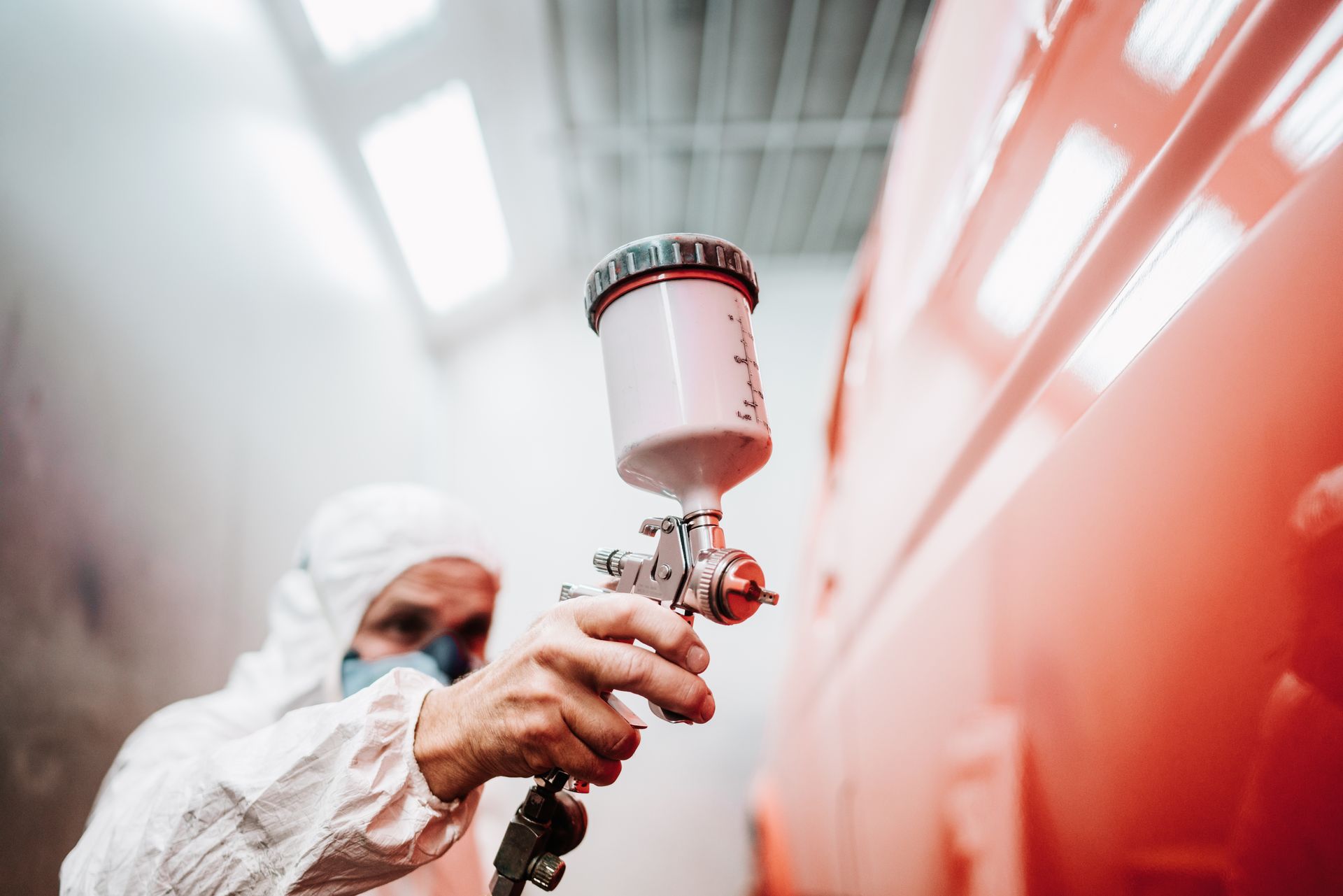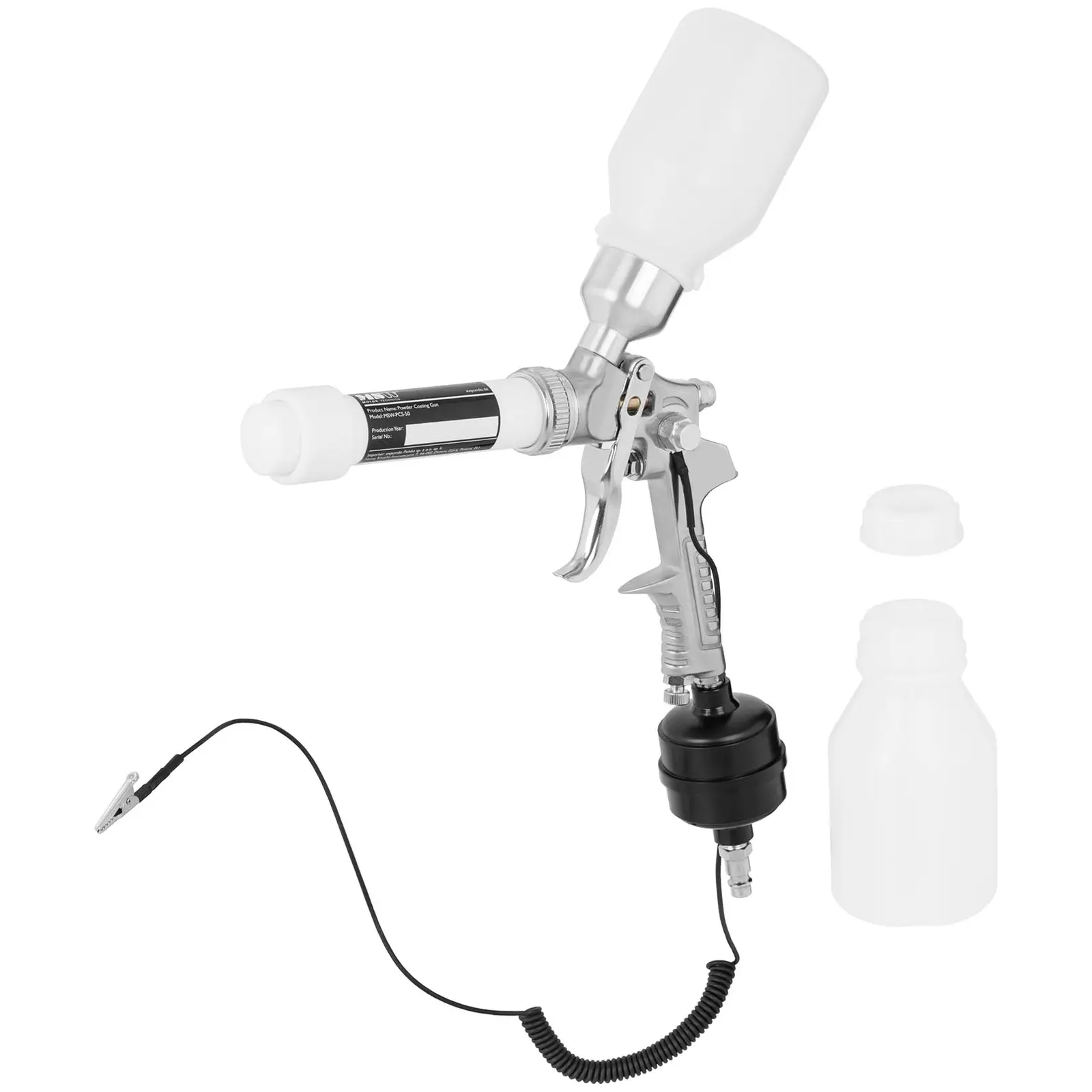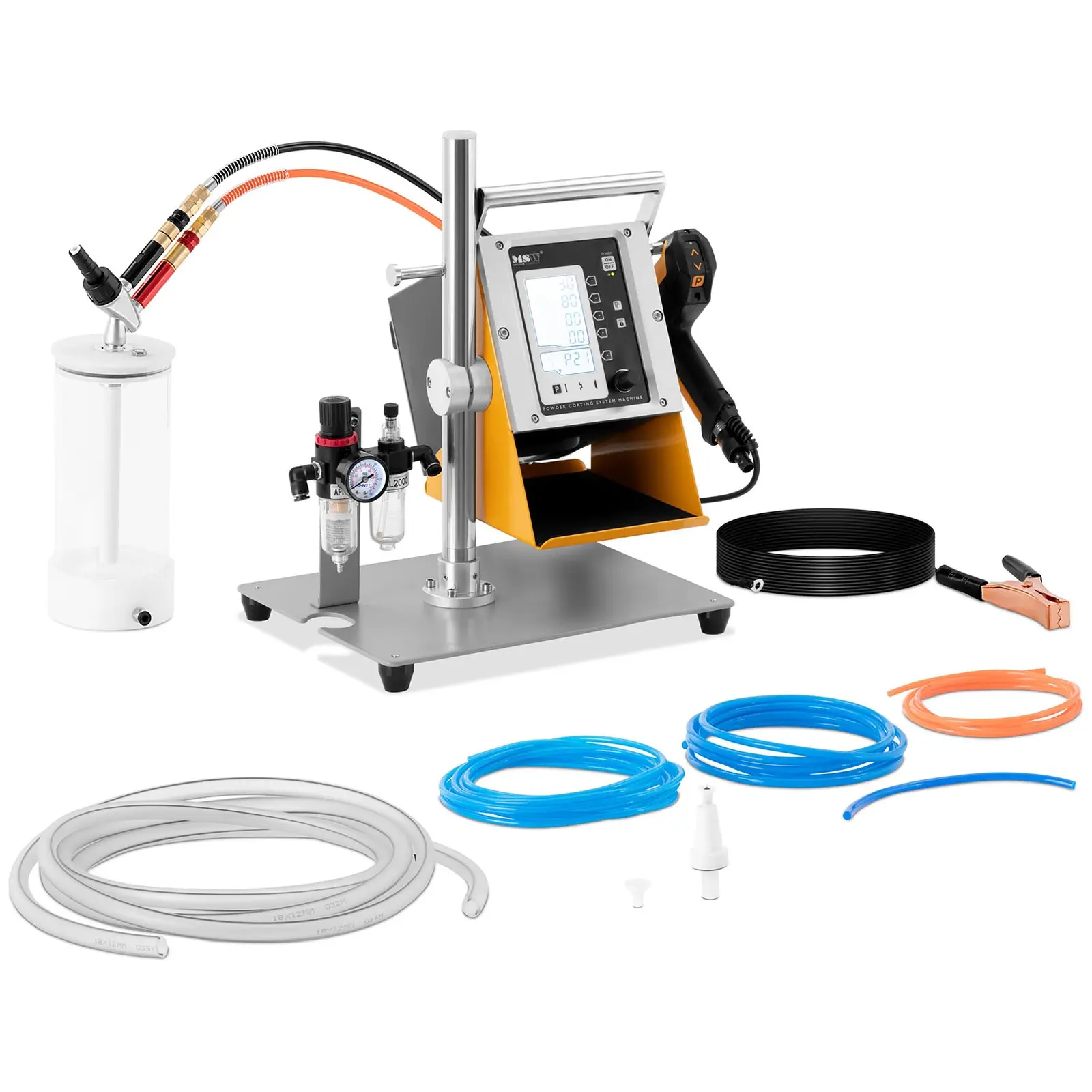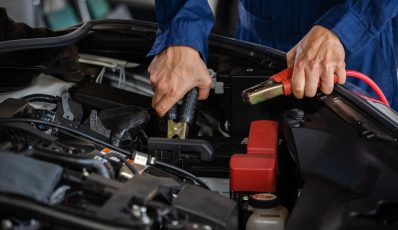Painting car bodywork and other demanding surfaces requires the right equipment. Which spray gun will be suitable for professional use, and which one for beginners? How does this type of tool work and what should you pay attention to when choosing a specific model? Let's have a closer look at these issues.

Painting car bodywork and other demanding surfaces requires the right equipment. Which spray gun will be suitable for professional use, and which one for beginners? How does this type of tool work and what should you pay attention to when choosing a specific model? Let’s have a closer look at these issues.
How does a spray gun work?
Let’s start with the basic principle of operation. Spray guns use the dynamic properties of gas and liquid streams. The paint is sucked out of the tank by the air stream that flows towards the nozzle. The opening of the nozzle dispenser is closed with a material needle controlled by a trigger installed in the spray gun handle, which is also responsible for controlling the air valve.
In practice pressing the trigger first opens the air valve, and only then, after pressing the trigger with more strength, is the fabric needle activated. This solution makes it possible to control and regulate the amount of air without the risk of unnecessary use of the paint.
An important element responsible for the flow of paint is also the air head. It does not have any form of adjustment and is very precisely made. The task of the air head is to atomise the paint stream, breaking it down into small droplets, and then safely moving it with the air to the painted surface.
The even distribution of paint depends solely on the experience of the person using the spray gun. The point here is whether the user will be able to maintain an appropriate distance from the surface, and whether they will be able to keep the right angle. Bear in mind that painting should be done in a smooth and continuous manner, in order to avoid differences in the coating, and an uneven finish.
Spray guns work on a principle similar to that of spray cans. Paint in the form of small drops is sprayed through the nozzle under appropriate pressure, resulting in an even layer of paint deposited on the surface.
Which spray gun should you choose? Specifications
The choice of spray gun should depend on your needs. One of the two most important aspects is the requirement for air. So before buying a particular model, carefully read the technical specifications of your compressor. The greater the air requirement of the spray gun, the greater the capacity of the air compressor should have. If your compressor has too low capacity, the process will be interrupted by your compressor turning off from time to time, which will certainly have a negative impact on the effects of your work.
The second very important aspect is the nozzle diameter. The bigger it is, the thicker the paint that you will be able to use. Wider nozzles mean painting takes less time, but also that more paint is used. So for using thinner paints or if you want to precisely paint smaller parts without unnecessarily wasting paint, use nozzles with a diameter of 1.5 mm or less.
Types of spray guns
Spray guns can be divided into several types. Each type has unique features, which should be among the factors behind your choice of spray gun. In this regard you should pay attention to the spraying technique, as well as how it is powered.
Based on the spraying technique, we can distinguish high pressure spray guns (HP), high volume low pressure spray guns (HVLP), reduced pressure spray guns (RP), and low volume low pressure spray guns (LVLP) using a low amount of paint. The first three are the most frequently used by car paint shops, although the HP technique is the oldest standard and is becoming less popular.
The nozzles of HVLP or low pressure spray guns have more holes, which means that the effective pressure drops but the amount of paint blown increases, making it possible to use low-viscosity paints, which in practice guarantees an even and thin coating. However, when using such paint you should keep a close distance between the nozzle and the painted surface.
However, using such a spray gun takes longer than with high-pressure (HP) equipment. For this reason a ‘compromise’ in the form of moderate pressure pistols, also called medium pressure (RP), can be used. By combining the advantages typical of HP and HVLP they allow for quick painting with a thin and smooth coat.
Regardless of the type, however, spray guns require compressed air generated by an air compressor in order to operate. Your choice should therefore depend on the parameters of your air compressor. High pressure spray guns will work well with more efficient compressors and low pressure spray guns with large capacity compressors.
In addition to pressure-powered spray guns, we can also distinguish gravity spray guns. They have a relatively small tank, located at the top, making them popular for painting small surfaces and small elements of various types.
An alternative are siphon spray guns, which are equipped with a large bottom tank. This makes them perfect for painting large surfaces, as well as more intensive works.
Spray gun tanks
The tank is quite a significant aspect worth paying attention to when deciding which spray gun to choose, so it is worth taking a closer look at our options. The paint tanks not only influence the visual design of the spray gun, but also their functionality.
Bottom tanks usually have a capacity of up to 1 litre, making them perfect for painting large surfaces, although they do also require more pressure to spray the paint out of such a large tank. Additionally, large bottom tanks don’t limit the your work comfort.
Top tanks, on the other hand, are much smaller than those mounted at the bottom but they enable work with much less pressure, because the paint flows automatically towards the nozzle thanks to gravity, making it ideal for painting small elements. Unfortunately, the larger the top tank, the more it will affect your work comfort.
-
Adjustable Panel Stand – 220 kg
75.00 €69.00 € -
Masking Trolley
-
Bumper Stand – 140 kg
85.00 €79.00 € -
Body Shop Rotating Panel Stand – 6 arms – 360° – 90 kg
179.00 €169.00 €
Spray gun nozzles
When deciding which spray gun to buy, it is also worth paying attention to the nozzle. However, there are many models available and it is not always easy to check the efficiency of this parameter. According to directives for the emission of volatile organic compounds (VOC) by spray guns, the spray efficiency should be greater than 65%, but in many cases manufacturers do not refer to this standard.
The spray efficiency can then be determined by the pressure range. It is also worth paying attention to the effective spray distance, although despite what’s mentioned in the technical specifications, it should also be taken into account that a lot also depends on the viscosity of the paint itself, so the actual spray distance may be much smaller than that declared in the technical specifications.
Let’s also take a look at the number and size range of the nozzles. This lets us determine whether a given spray gun will let us work at a certain pace and whether it is possible to effectively use different paints with a varying viscosity level, without limiting the spraying pressure. Bear in mind, however, that low-pressure spray guns working with the same nozzle as high-pressure guns will spray much less paint.
By checking the demand for air at the nominal working pressure you can obtain information regarding the spraying pressure. For high-pressure spray guns, the demand is about 250 l/min, while for low-pressure sprayers the demand is about 400 litres per minute. The nominal pressure for low pressure spray guns is up to 3 bar, while for high pressure guns it is above this scale.
Also in this case a lot depends on the viscosity of the paint used. Therefore, you should follow the rule that the lower the viscosity of the paint, the lower the desired spraying pressure. This will help you not only save paint, but also enhance the efficiency of our work.
Spray guns for professional use
If it is your first time with professional spray painting, then you might be wondering which spray gun will work best in this case? Air-powered tools are recommended here, i.e. tools that need to be connected to an air compressor. As mentioned earlier, low-pressure and medium-pressure spray guns are the most popular choice for professional use. This does not mean that you cannot use a high-pressure spray gun in such cases, however due to their limited functionality compared to the other types, they are definitely less common.
Which spray gun is best for beginners?
The situation is very different in the case of beginners, in which case spending money on expensive high-performance models may not be the smartest investment. Electrically powered spray guns are a good suggestion for sporadic home use, or other simple jobs, as they do not require connection to an air compressor, making them much easier to use. The only requirement is access to electricity.
Such models are also much smaller, and therefore more convenient to use. Bear in mind, however, that they are not suitable for more demanding jobs, such as painting car bodywork, due to their low efficiency. But for simple DIY use around the house they will be just perfect. Electric spray guns are also used for hobbycraft applications.
Which spray gun should you choose – summary
Using a spray gun for painting not only saves a lot of time, but also helps ensure a more accurate finish. Using such equipment can make the whole process even 3 times faster than using a standard paintbrush. What’s more, if properly used spray guns will not leave any streaks on the painted object, and it will be much easier to obtain a perfectly uniform finish.
Spray guns also make it much easier to paint hard-to-reach places. Taking into account the wide choice of models, as well as your specific needs, it is worth carefully considering which spray gun to choose. Aspects worth taking into account the power source, the design of the gun, as well as the basic technical parameters.
The possibility to use it with various nozzles is also important. And bear in mind that working with a spray gun requires a certain level of skill. Remember to keep the same distance between the spray gun nozzle and the painted surface when painting a given item, and try to paint at the same angle. Using a spray gun you are also exposed to harmful chemical in the paint, so don’t forget about protective measures for your eyes and mouth.










Share